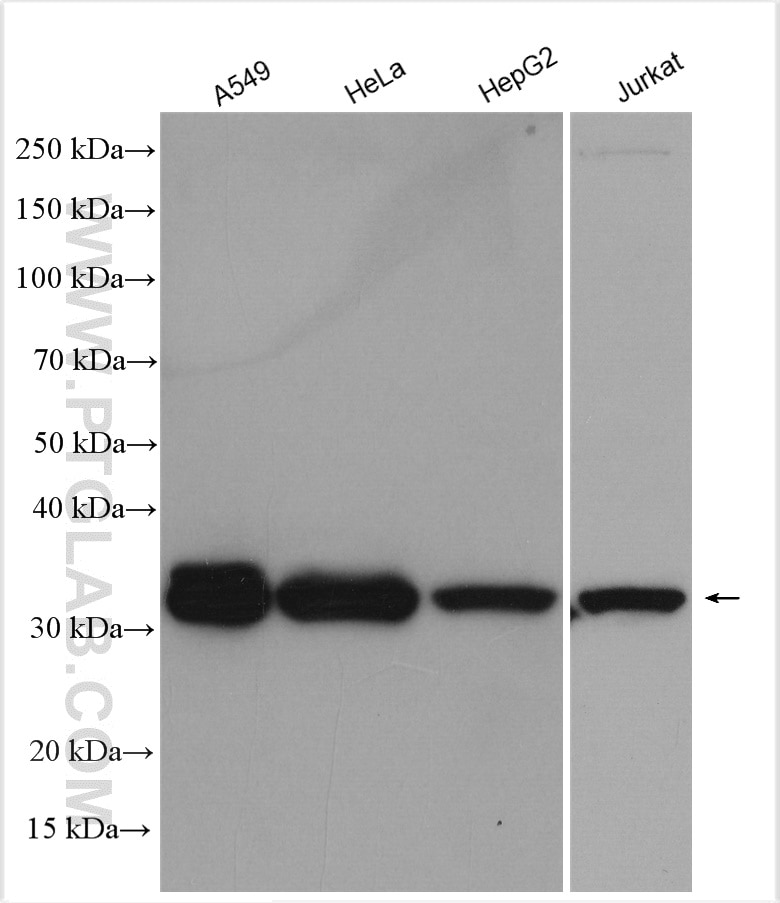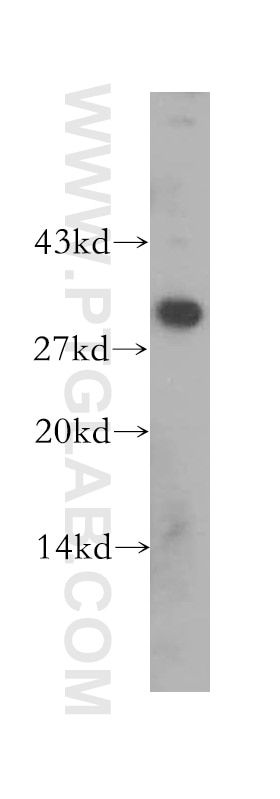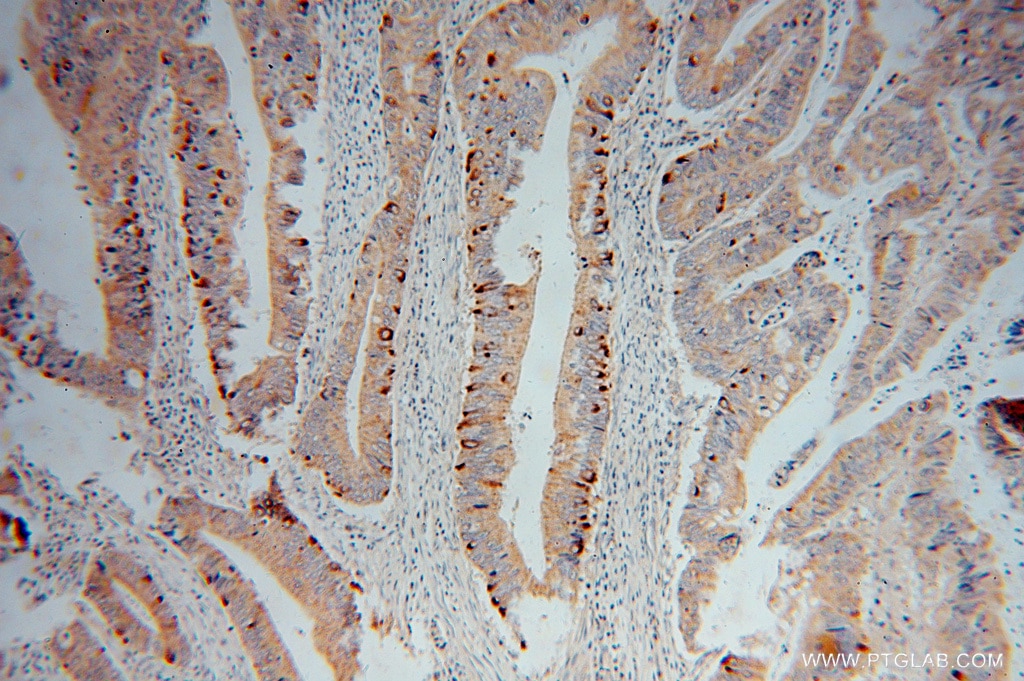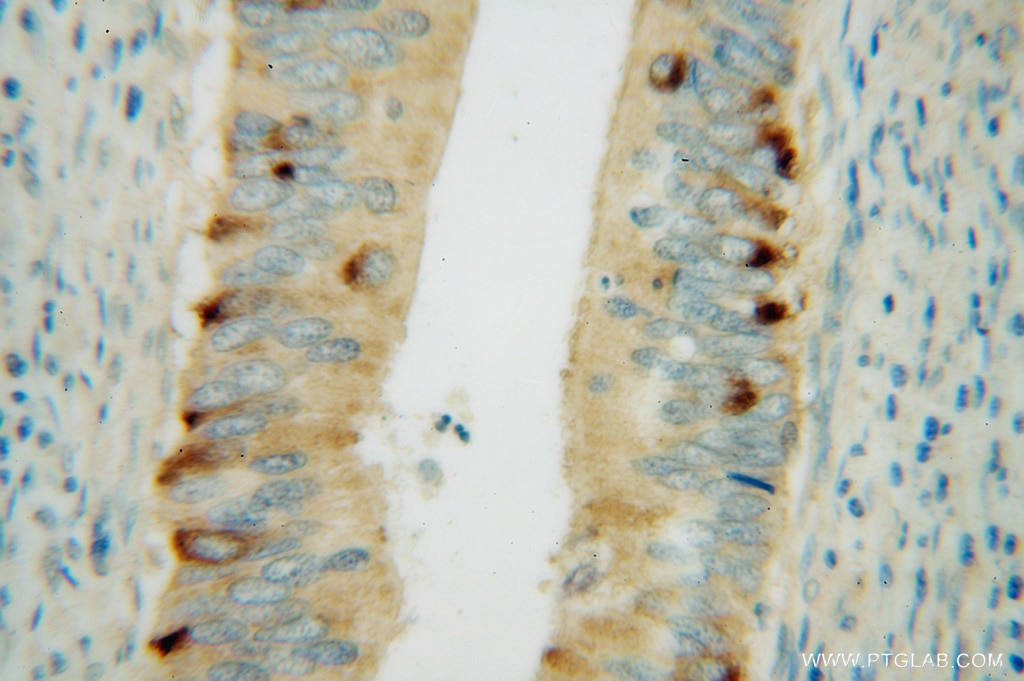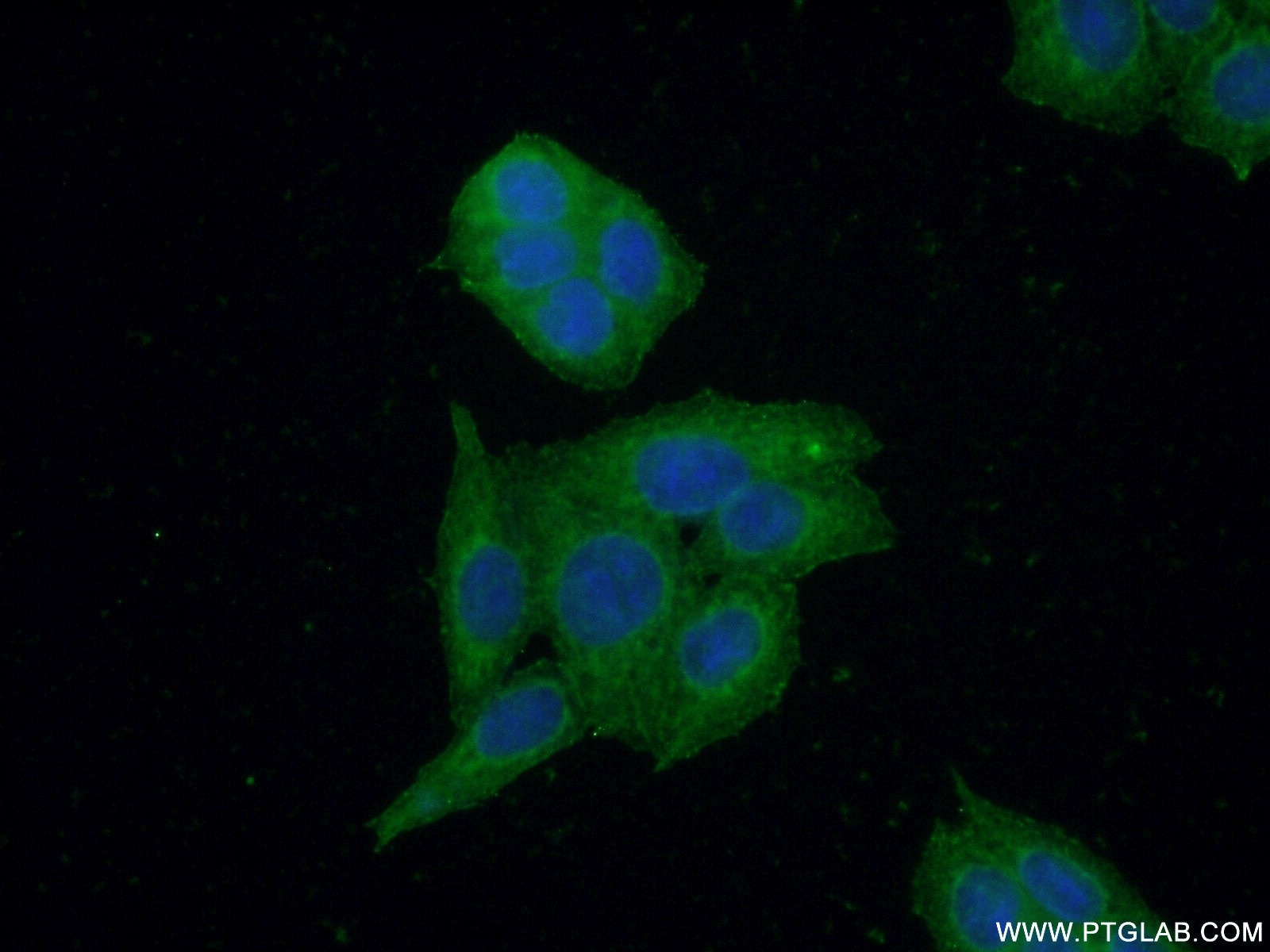Anticorps Polyclonal de lapin anti-CBR3
CBR3 Polyclonal Antibody for WB, IF, IHC, ELISA
Hôte / Isotype
Lapin / IgG
Réactivité testée
Humain et plus (2)
Applications
WB, IHC, IF/ICC, ELISA
Conjugaison
Non conjugué
N° de cat : 15619-1-AP
Synonymes
Galerie de données de validation
Applications testées
| Résultats positifs en WB | cellules A549, cellules HeLa, cellules HepG2, cellules Jurkat, cellules Jurkat |
| Résultats positifs en IHC | tissu de cancer du côlon humain il est suggéré de démasquer l'antigène avec un tampon de TE buffer pH 9.0; (*) À défaut, 'le démasquage de l'antigène peut être 'effectué avec un tampon citrate pH 6,0. |
| Résultats positifs en IF/ICC | cellules HeLa |
Dilution recommandée
| Application | Dilution |
|---|---|
| Western Blot (WB) | WB : 1:2000-1:12000 |
| Immunohistochimie (IHC) | IHC : 1:20-1:200 |
| Immunofluorescence (IF)/ICC | IF/ICC : 1:50-1:500 |
| It is recommended that this reagent should be titrated in each testing system to obtain optimal results. | |
| Sample-dependent, check data in validation data gallery | |
Applications publiées
| WB | See 3 publications below |
Informations sur le produit
15619-1-AP cible CBR3 dans les applications de WB, IHC, IF/ICC, ELISA et montre une réactivité avec des échantillons Humain
| Réactivité | Humain |
| Réactivité citée | rat, Humain, souris |
| Hôte / Isotype | Lapin / IgG |
| Clonalité | Polyclonal |
| Type | Anticorps |
| Immunogène | CBR3 Protéine recombinante Ag8039 |
| Nom complet | carbonyl reductase 3 |
| Masse moléculaire calculée | 31 kDa |
| Poids moléculaire observé | 31 kDa |
| Numéro d’acquisition GenBank | BC002812 |
| Symbole du gène | CBR3 |
| Identification du gène (NCBI) | 874 |
| Conjugaison | Non conjugué |
| Forme | Liquide |
| Méthode de purification | Purification par affinité contre l'antigène |
| Tampon de stockage | PBS avec azoture de sodium à 0,02 % et glycérol à 50 % pH 7,3 |
| Conditions de stockage | Stocker à -20°C. Stable pendant un an après l'expédition. L'aliquotage n'est pas nécessaire pour le stockage à -20oC Les 20ul contiennent 0,1% de BSA. |
Informations générales
CBR3(Carbonyl reductase [NADPH] 3), which Belongs to the short-chain dehydrogenases/reductases (SDR) family, has low NADPH-dependent oxidoreductase activity towards 4-benzoylpyridine and menadione (in vitro). The gene encodes a 31 kDa protein that can catalyze the reduction of many endogenous and xenobiotic carbonyl compounds, including steroids and prostaglandins. The deduced 277-amino acid CBR3 protein is 84% similar to the CBR1 protein(PMID:9740676).
Protocole
| Product Specific Protocols | |
|---|---|
| WB protocol for CBR3 antibody 15619-1-AP | Download protocol |
| IHC protocol for CBR3 antibody 15619-1-AP | Download protocol |
| IF protocol for CBR3 antibody 15619-1-AP | Download protocol |
| Standard Protocols | |
|---|---|
| Click here to view our Standard Protocols |
Publications
| Species | Application | Title |
|---|---|---|
Antioxid Redox Signal Regulation of the 20S Proteasome by a Novel Family of Inhibitory Proteins. | ||
Carcinogenesis Thioredoxin reductase 1 protects against chemically induced hepatocarcinogenesis via control of cellular redox homeostasis. | ||
Nat Commun Allosteric regulation of the 20S proteasome by the Catalytic Core Regulators (CCRs) family |
